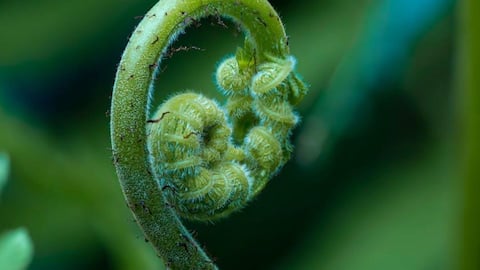Fiddlehead: Health benefits and how to cook
What's the story
Fiddleheads, young coiled fern fronds resembling a violin scroll, are also called "fiddlehead greens" for their vivid green color. Thriving in moderate climates like North America, Europe, and parts of Asia, they've been cherished for their unique flavor and health benefits. Their distinct shape adds visual appeal to dishes. Let's explore the world of fiddlehead ferns and their many health advantages.
Local names
Around the world
Indonesians have a beloved dish called gulai paku, featuring fiddlehead ferns, particularly the bracken variety. Across East Asia and Japan, these ferns are known as warabi, while in China, Korea, and Taiwan, they're called juecai. In the northern regions of the Indian subcontinent, fiddleheads are cherished, known as lingri in Himachal Pradesh and ningro in Darjeeling and Sikkim.
Nutrition
Nutritional powerhouses
Fiddleheads boast a rich mineral profile, with potassium and iron being predominant among the seventeen minerals they contain. Abundant in vitamins A and C, they also offer magnesium, phosphorus, niacin, and zinc. Omega-3 and omega-6 fatty acids further enrich their nutritional value. Comprising water (87%), carbohydrates, fiber, protein, and fats, fiddlehead ferns contribute to a nutritious, low-sodium diet.
Minerals
Heart health
Fern shoots offer a rich source of essential minerals and electrolytes, notably potassium, iron, manganese, and copper. Potassium, known for its heart-friendly properties, counteracts sodium effects, aiding in blood pressure and heart rate regulation. Additionally, they provide moderate levels of B-complex vitamins like niacin, riboflavin, and thiamin, contributing to energy and healthy fat metabolism and overall vitality.
Types
Edible and toxic
Edible fiddle ferns, such as the ostrich fern, are prized for their tender, flavorful fronds and are commonly found in temperate regions of North America, Europe, and Asia. Non-edible fiddle ferns, like the bracken fern, are widespread but not suitable for consumption due to potential toxicity. They often grow in a variety of habitats ranging from forests to rivers and streams across different continents.
Tips
Cooking fiddleheads
Whether you choose to pickle them for tangy bites, enjoy them raw in refreshing salads, or cook them as a delightful side dish, fiddleheads offer a fresh addition to any meal. However, it is crucial to handle them with care. Store them in the refrigerator and consume them promptly to retain their freshness. Before cooking, ensure thorough cleaning by washing away any clinging debris.
Stir fry, saute, skewer
Culinary possibilities
You can boil them with a bit of butter for a soft texture or sauté them with garlic for added flavor. They're also great in stir-fry dishes with mushrooms and herbs. You can even use them in dips or soups or simply skewer them along with assorted vegetables. Fiddleheads have a mild taste that goes well with many dishes.
Recipe
Fiddlehead mushroom pasta
Cook your pasta until al-dente. Blanch fiddleheads for two to three minutes, drain, and set aside. Sauté sliced mushrooms and minced garlic in olive oil until golden. Add the fiddleheads, some vegetable broth, the cooked pasta, Parmesan cheese, a splash of lemon juice, and some herbs. Toss until well-combined and creamy. Season with salt and pepper, garnish with parsley, and serve hot.
